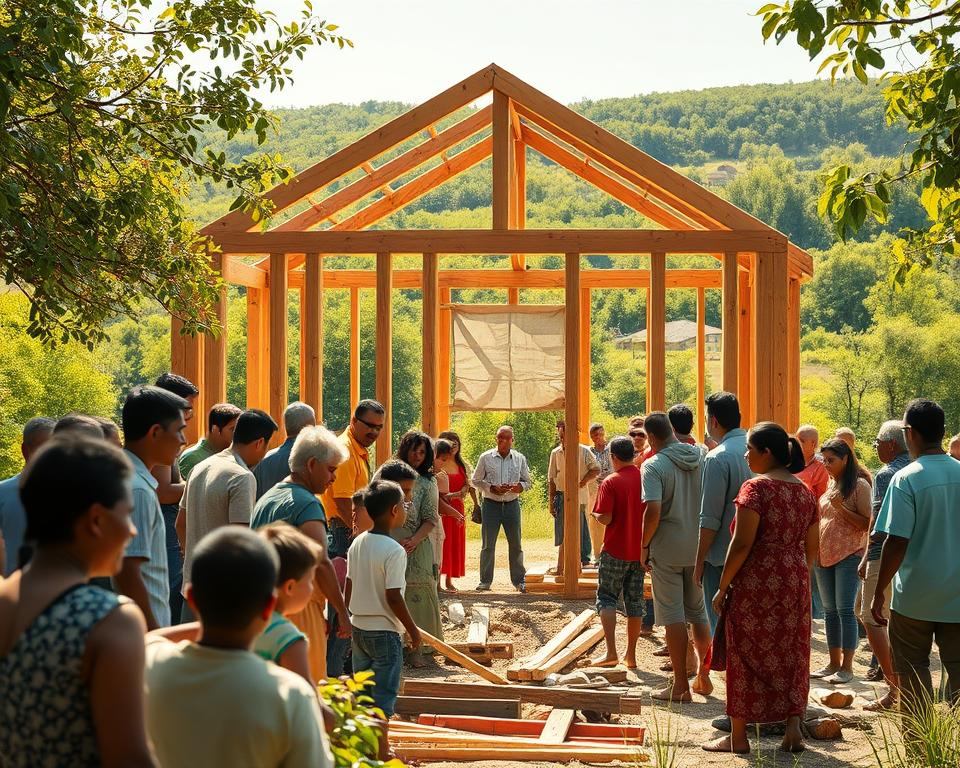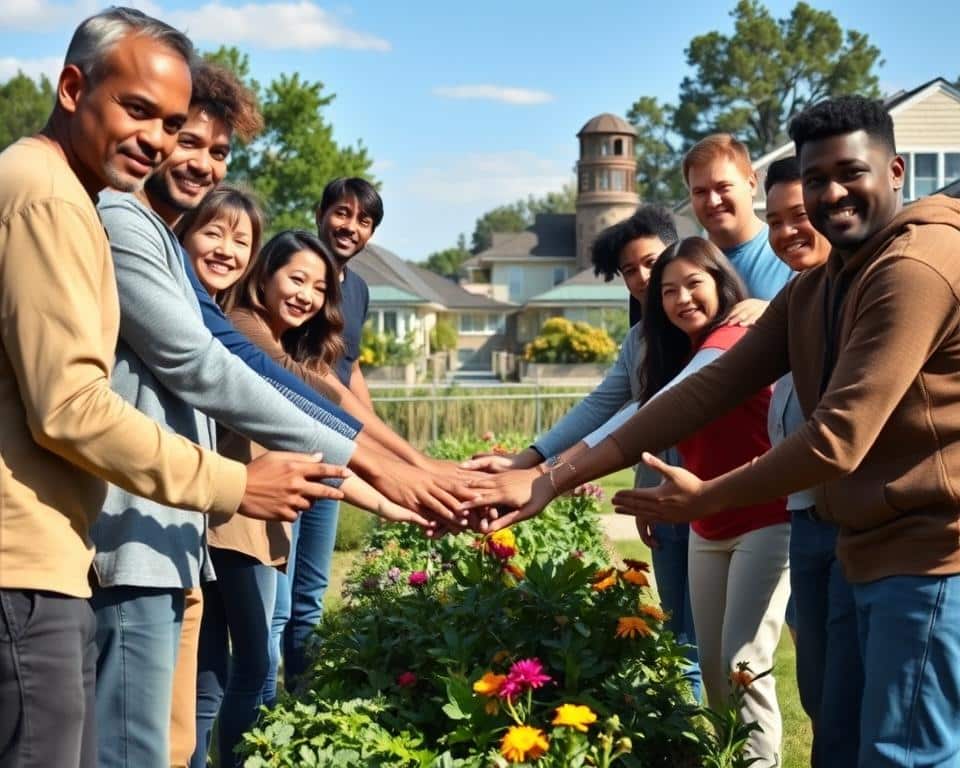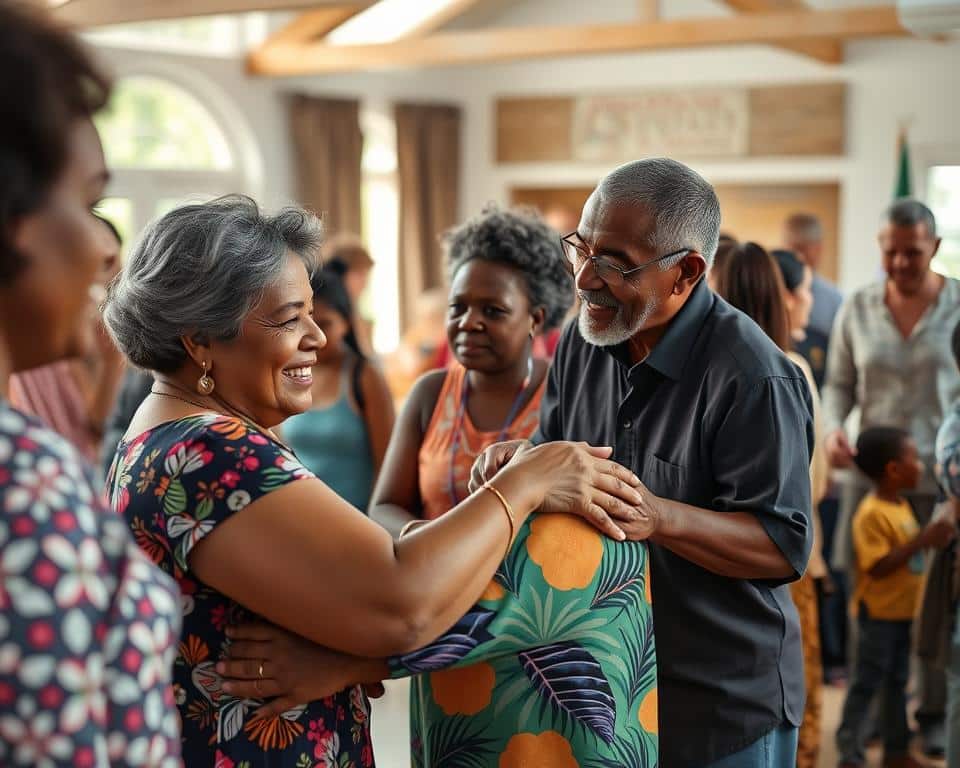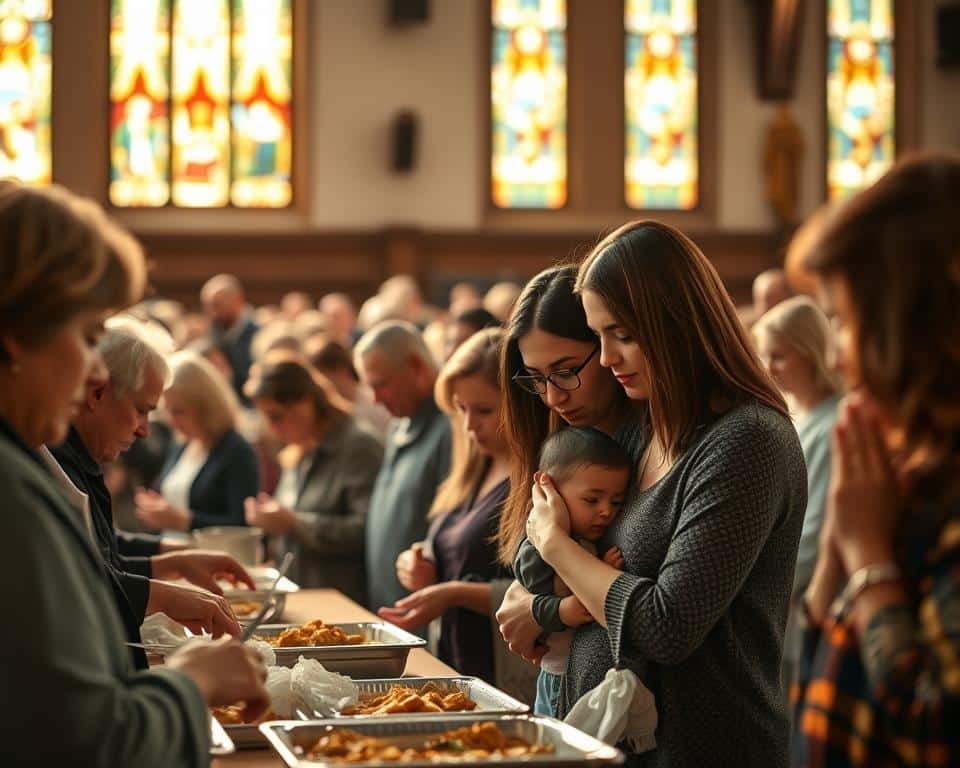“Faith by itself… is dead” (James 2:17). These powerful words remind us that belief must inspire action. When we live out God’s truth, we bring hope to those around us.
Scripture calls us to serve. Ephesians 2:10 says we are created for good works. This isn’t just a suggestion—it’s a mission. Across the U.S., believers answer this call daily.
Groups like SAMHSA partner with over 800 faith-based organizations. The World Health Organization also sees the impact of believers during crises. From food drives to disaster relief, love in action changes lives.
This article explores how biblical teachings lead to real-world service. Let’s discover the connection between what we believe and how we live.
Faith in Community Work: A Biblical Foundation
The Bible makes it clear: serving others is not optional for believers. From Leviticus 19:18’s command to love your neighbor to Jesus’ teachings in Matthew 25, Scripture ties belief to action. When we serve, we live out God’s truth in ways that transform lives.

Scriptural Calls to Serve Others
Leviticus 19:18 lays the groundwork: love isn’t just a feeling—it’s a choice to act. Jesus expanded this in Matthew 25:31-46, where He equates feeding the hungry and visiting the sick with serving Him directly. This parable isn’t merely guidance; it’s a blueprint for how believers should live.
Examples of Jesus’ Community Involvement
Jesus modeled service daily. He healed the blind (John 9:1-7), fed 5,000 with loaves and fish (Matthew 14:13-21), and restored lepers (Luke 17:11-19). Each miracle met physical needs while pointing to spiritual truth.
Today, food banks and free clinics follow this biblical model. They show love in action, just as Jesus did. When we serve, we continue His work—one life at a time.
Building Unity Through Shared Beliefs
Shared beliefs create bridges where walls once stood. Romans 12:5 reminds us we are one body in Christ, called to uplift one another. This truth transforms neighborhoods, churches, and cities.

How Faith Breaks Down Barriers
Galatians 3:28 declares, “There is neither Jew nor Greek”—a blueprint for racial reconciliation. A church in Atlanta lived this out by uniting diverse members to build a playground. Their collaboration became a model for cross-cultural unity.
Three steps to foster collaboration:
- Identify shared goals (e.g., youth outreach).
- Invite diverse voices into planning.
- Celebrate cultural differences as strengths.
Creating a Sense of Belonging
SAMHSA’s Hope Guide highlights how youth thrive with relational support. Monthly interfaith meals can deepen connections. When leaders prioritize inclusion, entire communities flourish.
True unity starts with small, intentional acts. A shared meal or service project plants seeds of lasting change.
Serving Others as an Expression of Faith
Service transforms Scripture into lived experiences. When we meet tangible needs, we mirror Christ’s love. It starts with seeing our neighborhoods through His eyes.
Identifying Needs in Your Community
Philippians 4:6-7 teaches us to pray about everything. Begin with prayer walks—observe school performance, food pantry lines, or addiction rates. SAMHSA’s toolkit highlights opioid crises as urgent needs.
Five signs your area may need support:
- Rising student absenteeism
- Long waits at free clinics
- Empty shelves at food banks
- Unemployment spikes
- Isolated seniors
Organizing Impactful Service Projects
An Alabama church launched a job training program after spotting employment gaps. Their four-phase plan works anywhere:
- Pray: Seek God’s direction.
- Partner: Collaborate with local agencies.
- Promote: Mobilize volunteers through clear roles.
- Persist: Adjust programs as needs evolve.
Pool resources wisely. SAMHSA reports that faith-based overdose prevention saves lives. Your next step could start today.
Empowering Through Prayer and Support
True care begins on our knees before it reaches our hands. James 5:16 reminds us, “The prayer of a righteous person is powerful and effective”. This truth fuels service that transforms lives—both for those giving and receiving.
The Role of Prayer in Service
Prayer isn’t just preparation; it’s the foundation. A Texas megachurch’s 24/7 prayer chain model shows how proactive prayer shifts outcomes. Volunteers cover every hour, interceding for needs before they arise.
Two approaches to prayer in action:
- Reactive: Praying after crises strike (e.g., disaster relief).
- Proactive: Covering future projects in prayer (e.g., job training launches).
Pairing food boxes with handwritten prayer cards merges physical and emotional care. One recipient shared,
“The prayers fed my soul as the food fed my family.”
Building Practical Support Systems
Scripture calls us to “carry each other’s burdens” (Galatians 6:2). SAMHSA’s mental health first aid training equips volunteers to offer support during crises. Simple actions—like active listening—save lives.
Three ways to strengthen care networks:
- Form caregiver respite teams to prevent burnout.
- Host workshops using SAMHSA’s Compassion in Action guide.
- Create hope-filled spaces (e.g., community gardens with prayer benches).
When prayer and practical steps unite, hope becomes tangible. A meal, a listening ear, or trained support can turn despair into renewal.
Partnering with Local Organizations
Effective partnerships multiply our ability to serve. When churches and organizations unite, they create access to solutions no group could achieve alone. The HHS Partnership Center documents how shared efforts transform entire neighborhoods.
Collaborating with Non-Profits and Charities
Successful alliances follow four stages:
- Discover: Identify gaps through needs assessments (e.g., a St. Louis church found 38% food insecurity in their zip code).
- Connect: Meet potential partners through United Way directories or HHS resource lists.
- Align: Pool resources strategically—like sharing kitchen space for meal programs.
- Sustain: Create written agreements covering volunteer roles and maintenance costs.
Missouri’s “Full Plates Initiative” shows this works. Twelve churches partnered with a food bank, increasing meal distribution by 240% in one year.
Watch for these partnership red flags:
- Vague expectations about health care or legal responsibilities
- One organization dominating decisions
- No exit strategy for failed collaborations
Combining Resources for Greater Impact
Shared spaces demonstrate practical synergy. Many congregations host:
- AA meetings in fellowship halls
- Job training in unused classrooms
- Free clinics in multipurpose rooms
The HHS employment roadmap helps former addicts rebuild lives. By linking their program with local employers, churches provide complete access to recovery resources.
When organizations share skills and spaces, they create lasting change. A single building can feed bodies, mend hearts, and restore dignity—all through collaborative care.
Faith-Based Organizations and Mental Health
Mental health challenges touch every community, calling for faith-led responses. The CDC reports 20% of Americans experience mental illness yearly—a crisis demanding compassionate action. Scripture’s command to “carry each other’s burdens” (Galatians 6:2) fuels this mission.
Supporting Mental Health in Communities
Churches often serve as safe havens during emotional crises. SAMHSA’s data shows faith-based groups help reduce suicide rates by 25% in partnered neighborhoods. Their 5-step crisis protocol equips volunteers to:
- Listen without judgment.
- Assess immediate risks (e.g., suicidal thoughts).
- Connect individuals to professional care.
- Follow up within 48 hours.
- Pray for ongoing healing.
During COVID-19, WHO mobilized faith leaders to share hope. Their toolkit included mental health scripts for sermons—proving truth and science can unite.
Resources for Faith Leaders
NAMI FaithNet offers free training on trauma-informed ministry. Their modules teach:
- Recognizing signs of depression/anxiety.
- Responding to opioid overdoses (using SAMHSA’s outreach strategies).
- Creating peer-support groups.
“Churches are bridges to healing when we combine prayer with evidence-based guidance.” —SAMHSA Hope Guide
From youth suicide prevention to pandemic response, faith-driven care transforms lives. The need is urgent, but so is our capacity to serve.
Practical Steps to Start a Faith-Based Project
God-sized dreams need practical plans—discover how to begin your project. James 2:17 reminds us that deeds complete belief. Whether launching a food pantry or mentorship programs, these steps will help turn vision into action.
Assessing Community Needs
Start by listening. A Georgia church identified education gaps when 60% of local students struggled with reading. Their needs survey revealed three priorities:
- After-school tutoring space
- Parent literacy workshops
- Weekend meal packs
Use SAMHSA’s grant funding guide to support your assessment. Their template helps document:
- Demographic data (age, income levels)
- Existing programs and gaps
- Potential partners (schools, clinics)
Mobilizing Volunteers and Resources
People are your greatest asset. A skill-matching spreadsheet helps connect talents to opportunities—like pairing accountants with budget planning or teachers with tutoring.
Three low-cost starter projects build momentum:
- School supply drives (collect backpacks August–September)
- Senior companion visits (weekly check-ins)
- Job readiness workshops (resume help, mock interviews)
“Our tutoring program grew from 5 to 50 volunteers in one year by focusing on measurable impact.” —Atlanta Outreach Director
Track progress with simple metrics: meals served, students mentored, or jobs secured. Small steps lead to lasting change.
The Lasting Impact of Faith-Driven Service
Every act of service plants seeds of lasting change. SAMHSA reports show faith-based rehab programs achieve 30% higher success rates than secular alternatives. One transformed life—a former addict now leading outreach teams—proves this impact.
“The food ministry saved my family,” shares a single mother of three. Her story mirrors countless lives changed through practical hope. When we serve, we participate in God’s transformation work.
Revelation 22:2 paints a vision of healing for every community. Like leaves on the tree of life, our acts of care bring renewal. This is the enduring impact of living out God’s truth—one person, one hope-filled moment at a time.





